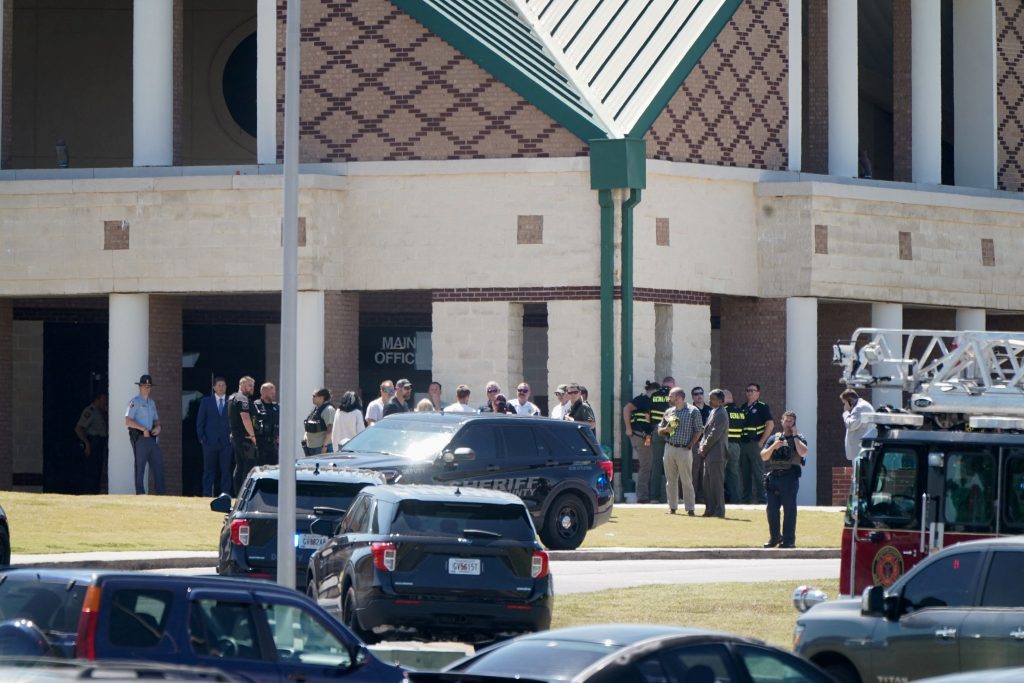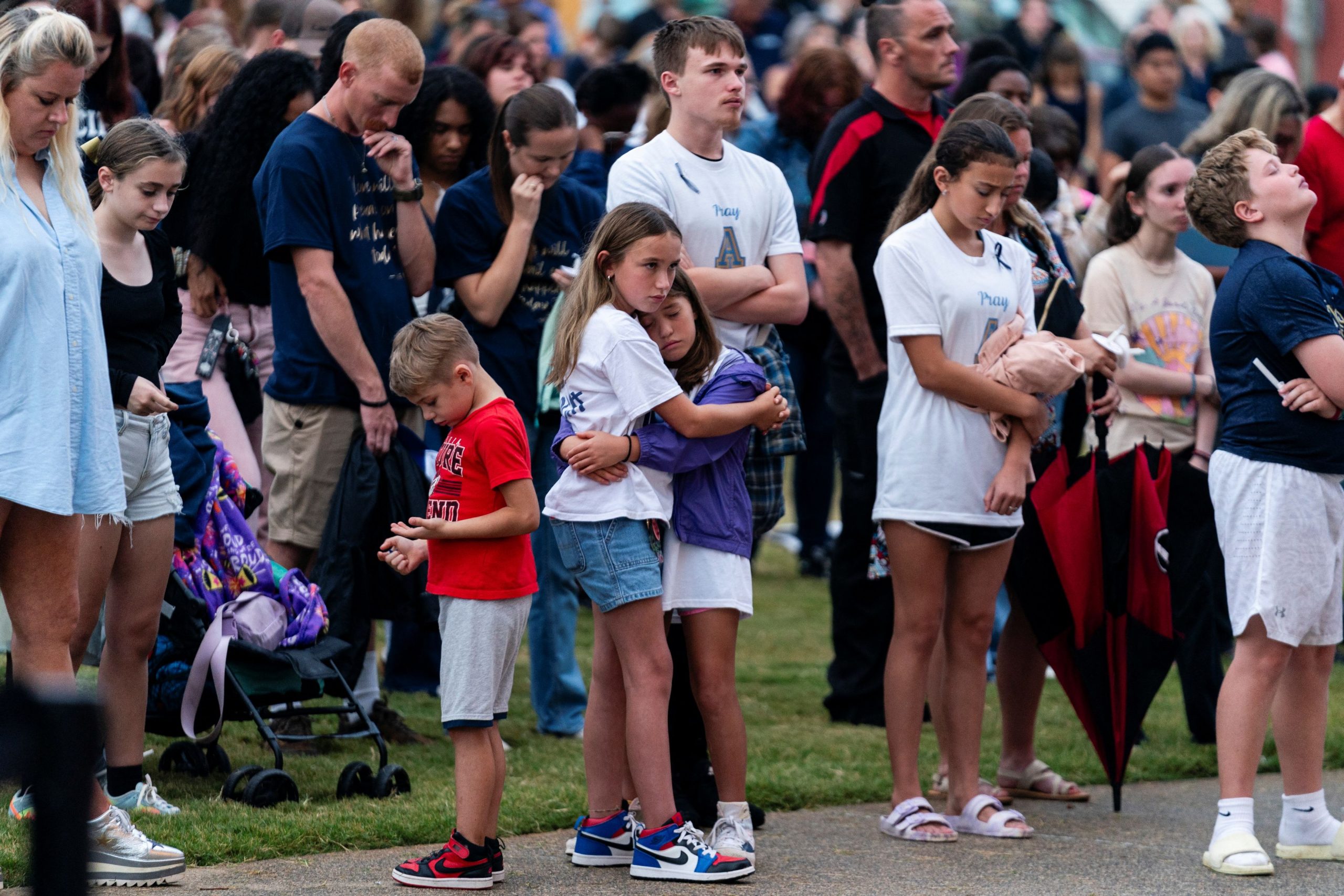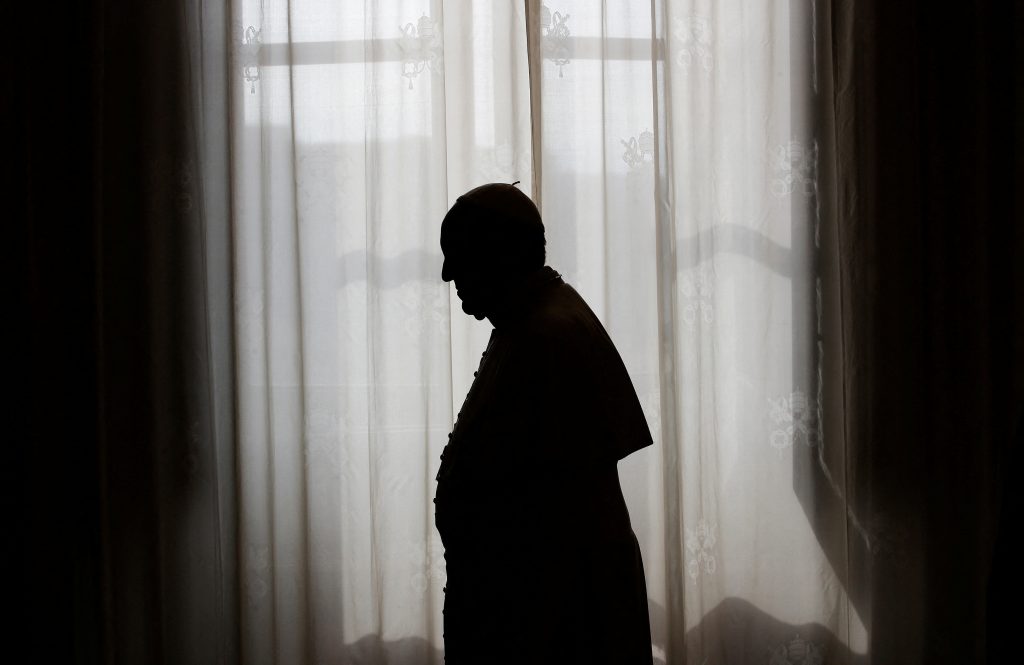The 14-year-old charged with killing two students and two teachers at a Georgia high school this week cut a sickeningly familiar figure: A troubled teen who had been reported to authorities for alleged past threats to carry out a school shooting.
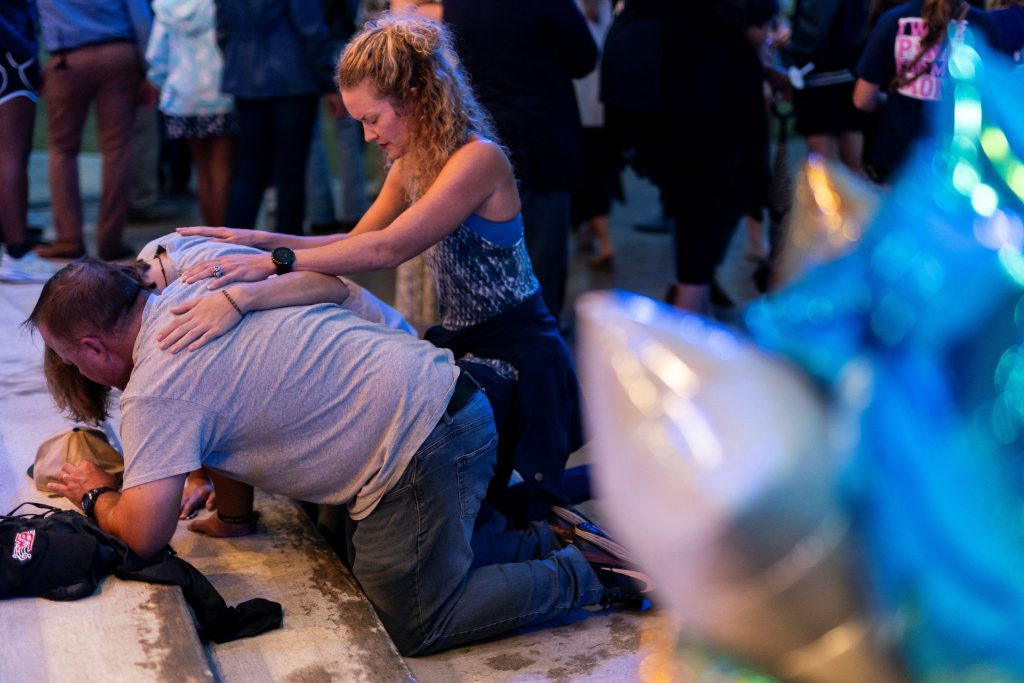
People pray during a vigil following the shooting at Apalachee High School, at Jug Tavern Park in Winder, Georgia, U.S. September 6, 2024. REUTERS/Elijah Nouvelage
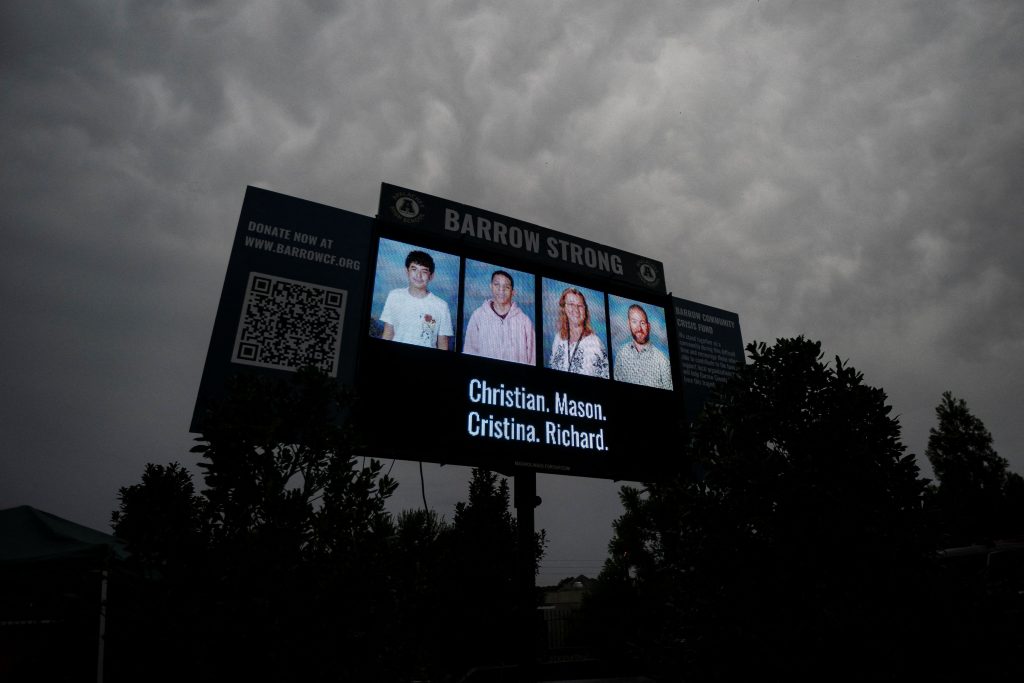
Photos of the victims of the Apalachee High School shooting are displayed on a screen during a vigil at Jug Tavern Park in Winder, Georgia, U.S. September 6, 2024. REUTERS/Elijah Nouvelage
Most mass shooters let the world know they are going to strike. When researchers at the Secret Service’s National Threat Assessment Center studied school attacks between 2008 and 2017, they found that 77% of perpetrators threatened their targets or shared their intentions beforehand.
So why can’t they be stopped?
In the growing field of threat assessment, professionals say there is a way to stop them long before they pick up a gun. These experts work at schools, businesses and police agencies to identify, evaluate and manage threats with interventions such as monitoring, therapy or, in extreme cases, arrest.
“Every time there’s a shooting, people say nothing can be done,” said John Nicoletti, a pioneer in the field and co-founder of the threat-assessment firm Nicoletti-Flater Associates. “They don’t realize a lot of things can be stopped.”
Detecting warning signs
The field has grown with the rise of mass shootings. The Association of Threat Assessment Professionals counts 4,300 members, versus 1,170 a decade ago.
Threat assessment is being used in more schools than ever. Nine states, including Florida and Texas, now require schools to have teams for this work. A bipartisan bill passed after the 2022 Uvalde elementary-school massacre included new funding for training in the discipline.
Advocates say when done right it has prevented school attacks.
Threat-assessment teams of psychologists, law enforcement, security and educators look for signs of what they call “proactive attack behavior,” such as hit lists, maps of the school, accumulation of weapons or a fascination with school shooters, said John McDonald, chief operating officer of the Missouri School Boards’ Association’s Center for Education Safety. They discount things like offhand threats made in playground spats.
Schools vary on how they handle students deemed to be credible threats. In the school district where the 1999 Columbine High School massacre occurred, case managers have talked with them regularly, monitored their social media and checked in with their therapists—even sometimes for years after they graduated or left school, said McDonald, the former security chief there.
In one case, a student involved in aggressive behavior who was found to be mapping out school cameras and making a type of camouflage suit used by snipers was monitored by the district after he left school. He didn’t launch an attack. In another, a student who made violent threats at the high school and nearby community college was given intensive therapy.
“It’s really tough work,” McDonald said. But it has shown success, and more experts are zeroing on how, when taken seriously and carried out properly, this work might be among communities’ best defense.
The Secret Service said in its 2019 report on school attacks that a threat-assessment team “is the best practice for preventing future tragedies.”
Crucial planning and prevention
The field faces big obstacles. Schools that haven’t experienced an attack are less likely to make threat assessment a priority. School budgets favor physical security like cameras and metal detectors. Some parents recoil at the intrusive monitoring that is often part of these programs. And critics say threat-assessment programs can target the wrong students. After Texas required schools to do them in 2019, researchers at the nonprofit Texas Appleseed found Black students were disproportionately represented in threat-assessment processes.
Students identified as threats also weren’t given enough help, they found. “It’s a lot of disaffected, isolated young white boys who are perpetrating these acts of mass violence,” said Andrew Hairston, Appleseed’s education justice project director. “Based on the data, they are very unlikely to receive this threat-assessment process.”
And even when schools do adopt such teams, there are major gaps in expertise.
“The discipline of threat assessment is outpacing the competent application of it in schools,” said Bryan Vossekuil, a retired Secret Service special agent who co-wrote a seminal study on school shootings for the agency two decades ago.
Schools have improved at identifying and reporting risks, but not all districts have expertise to properly evaluate whether a student is likely to carry out an attack. And even fewer are prepared for the crucial final step: keeping tabs on the troubled student and devising a plan to prevent them from lashing out violently if their threatening behavior doesn’t rise to the level of a crime.
“People are seeing something and saying something, but when they report there may be no mechanism to address the threat if no arrest is made,” said Russell Palarea, chief executive of the threat-assessment firm Operational Psychology Services.
Communication confusion
In Georgia, the 14-year-old alleged shooter in this week’s school attack, had been interviewed by law enforcement a year ago. But on Friday, confusion was unfolding about whether the 2023 incident involving the teen was shared with relevant schools as previously thought, Jackson County Sheriff Janis Mangum said in an interview with The Wall Street Journal.
Mangum said the Jackson County Sheriff’s Office responded after the Federal Bureau of Investigation received a tip on Saturday, May 20, 2023, about an online threat to shoot up a middle school. The sheriff said the teen was then a student at Jefferson Middle School, which had already let out for summer the day before.
An investigator visited Colt Gray’s home that Sunday, May 21, and then emailed the FBI saying “area schools” had been made aware. But in the interview Friday, Sheriff Mangum said school district officials have said they don’t have documentation of the warning. She said the deputy has since left the sheriff’s office and she was trying to determine whether anyone received it.
“I’m very disturbed,” she said. “I don’t know what to think and I’m very disturbed.”
The FBI tip was alarming at first glance. Online threats including photos of guns had been posted on Discord, a social-media site, by a user whose profile name was Lanza spelled in Russian, referencing the Sandy Hook Elementary School shooter, according to an incident report released by the sheriff’s office. An email associated with the account belonged to Gray, according to the FBI, the report said.
Gray’s father told investigators he had hunting rifles in the house, but said his son didn’t have unsupervised access to them. Gray denied making threats, saying he’d stopped using Discord because his account had been hacked, according to an incident report. The investigators said they couldn’t substantiate that Gray was behind the account so they dropped the case, the report said.
Gray’s father has been charged with second-degree murder, involuntary manslaughter and cruelty to children stemming from “knowingly allowing his son, Colt, to possess a weapon,” authorities said.
Threat-assessment experts say the Georgia shooting demonstrates that more needs to be done even if no arrest is made, and that threats shouldn’t be brushed off.
“That’s still the hardest thing: getting people to take these things seriously,” said Nicoletti.
Write to Zusha Elinson at zusha.elinson@wsj.com
